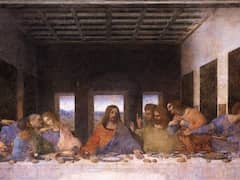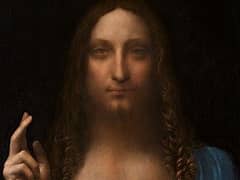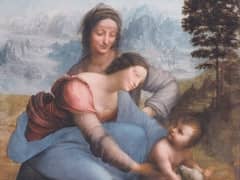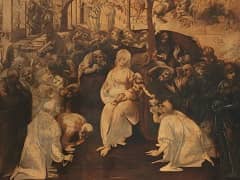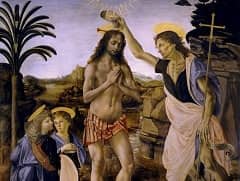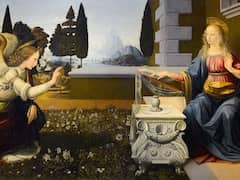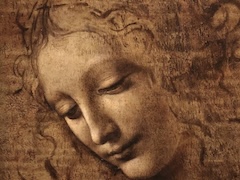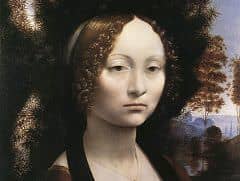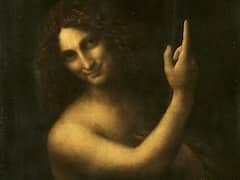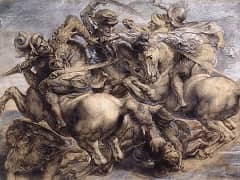St. John the Baptist - by Leonardo Da Vinci

St. John the Baptist was painted by Leonardo da Vinci from 1513 to 1516, when the High Renaissance was metamorphosing into Mannerism, it is believed to be his last painting. This is an oil painting on walnut wood. The original size of the work was 69x57 cm. It is now exhibited at the Louvre.
The pointing gesture of St. John toward the heavens suggests the importance of salvation through baptism that John the Baptist represents. The work is often quoted by later painters, especially those in the late Renaissance and Mannerist schools. The inclusion of a gesture similar to John's would increase the importance of work with a religious conceit.
Many people are critical of this work, finding it a disturbing representation of a character normally portrayed as gaunt and fiery, living in a desert and surviving on a diet of locusts and honey. In Leonardo's painting St. John seems almost to be a hermaphrodite. He has a womanish arm bent across his breast, his finger raised towards heaven, and that same enigmatic smile so admired on the face of Mona Lisa, a smile which can be seen in other Leonardo paintings like that of St. Anne. His face is almost faun-like and framed by a glorious cascade of curls. The finger pointed towards heaven was to appear quite often in Leonardo's work (the Burlington House Cartoon is another example) and denotes the coming of Christ.
Leonardo was aware of the inherent dangers of this system. Earlier in his notes he warned that a figure will not be discerned against a dark background and will not appear to be detached from it. From a distance nothing will be visible but the illuminated parts. However, in the shadows of the body of St. John the Baptist, Leonardo has retained just enough light for us to be able to comprehend his form fully. As in the moon, even the dark areas of his figure retain a slight glimmer of reflected radiance.
This is the last known major work in Leonardo's hand. The figure's haunting beauty comes from the ambiguity of its sexual identity. The luminous face seems to be an emanation of the darkness that completely envelops it. The mysterious gesture of the raised arm with an upward-pointing finger is not just of religious but probably also of esoteric significance.


